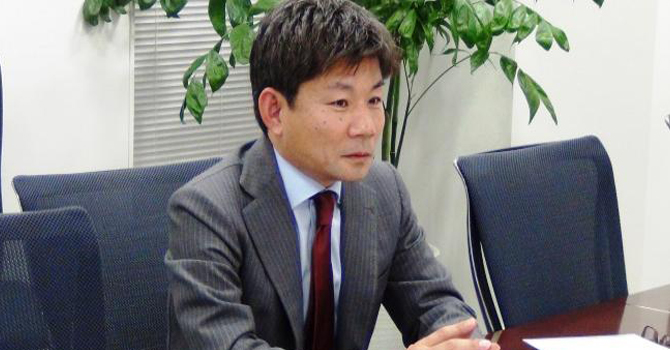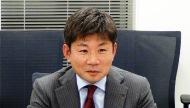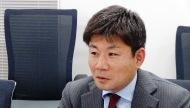Kenichi Ura

- Classification
- Equity
- Company
- KU and Associates
After graduation from Yokohama National University in architecture. Mr. Ura joined Wako Securities (currently Mizuho Securities) as a broker in 1987. In 1988 he was transferred to research division as an analyst. He joined Baring International Asset Management as an analyst in 1990 and from 1993 as a fund manager of Japan equity in the same company until 1999.
And worked as a fund manager of Japan equity in Prudential Portfolio Managers (currently Eastspring Investments) in 1999-2006. In 2007 he established KU and Associates Co., Ltd. as an only founder and works as CEO and CIO.

Our investment philosophy is composed of two key laws. The first law is that ‘The market tends to get distorted.’ The second law is that ‘Stocks are valued in wide range but with appropriate limit and finally return to fundamental price.’ In the short run, the first law controls the market more, but in the long run, the second law controls more. Although fundamental approach is the basic standard to build portfolio, this approach faces a difficult situation in the short run due to the first law. Additionally, recent stock markets are mostly occupied of arbitrage and high frequency trade which rarely relate to fundamental value but induce volatility. By this tendency, the first law is more powerful than before and fundamental approach does not work well. Meanwhile simple fundamental approach of low PER and/or low PBR would attain outperformance against the market with significant high probability in the long run due to the second law. Therefore the main point of investing is to consider the balance of the two laws.
Our investment process top-down approach to pick up stocks through gathering and organizing bottom-up information of daily visits to companies, various seminars, and conversations with industrial companies. Company visits are favorable for building our scenario. Our first scenario might be wrong; we do not decline this hypothesis. On the contrary we consider the second scenario, the third and so on as far as our imagination to hedge our mistakes and build a barbell type of portfolio which performs better.

Because of the first law, sometimes the market loses right way and moves to extreme levels, typically a pile of daily trades. As for past large ones: ‘The market cap of NTT went beyond overall market cap of Frankfurt.’ A lot of companies’ net cash went beyond each market cap due to stagnant stock prices.’ But the market corrects when it reaches a limit. Hence, the second law, we think investing in this correction is a very attractive opportunity to attain low risk and high return.
We focus on Japanese micro cap stocks under 10 bn yen, which have the most opportunity. Analysts do not suggest anything for this market cap. Institutional investors do not participate in this market cap. These behaviors make negative spiral to this cap. Also, recent crises resulted in sell-offs despite good valuation. On the other hand, smid caps have been bought to level due to relatively large fund size caused by optimistic growth story of companies. By investing in micro caps, we can expect a valuation correction to appropriate levels, and further shift from micro to small-mid, consequently enjoying higher valuation, that is price rise, made by the above reason.
As I told this story, investors sometimes object it saying, “Under-value is worth investing. But when will such stocks rise because they are neglected long time, even eternally?” My answer is this, “No need to rise.” The reason is below. Before Abenomics, there were hundreds of micro cap stocks with PER of 5 around despite poor profit level. If Japanese economic growth comes back at an average pace, many companies would make their profit higher than previous year by 20% for three years. On the other hand, share holders are very anxious about low dividends and would insist improvement, caused by the transition of main holders from corporate and institutional investors to individuals and foreigners. Assuming a stock with PER of 3 and dividend payout ratio of 30%, the dividend yield of the stock is 10% before tax. This 10 % dividend yield is enough as an investment and is followed by the stock price. Two years ago, overall Japan stock market was pulled by negative expectation, but nowadays micro cap would be pushed after large and small-mid cap have risen already.

I graduated with a degree in architecture, but I did not study hard about architecture. So I visited a lot of companies of different businesses as my first career before graduation, considering my good use of architectural knowledge outside that field. Because I saw much news in securities companies in those days, I visited one of them to understand their business, felt a somewhat perfect fit and decided to get in the company although I was not interested in economics nor finance at all at that time. I do not have prejudice in those fields nor investment neither. Nonetheless I have got my call, worked for 30 years and keep working for my life.

Because I am enlightened that “Equity is the lower layer among asset classes which I invest in”, I will devise my strategy generating return over equivalent risk. I am always challenging myself to work better to make it and doing my best effort at full power.

Strategy is more important than risk figures to reserve clients’ money. One of my strategies for reservation is the barbell type of portfolio in Q.1. considering scenarios thoughtfully. The other one is to make a checkmate situation, similar to chess. As for stock investment, timing to invest in is very important. I buy stocks when I feel the price is cheap, even better if trading down. I will explain it more for my Japan micro cap strategy. It is the story of Q.2. that present PER of 3 based in forecasted three years makes dividend yield of 10%, assumed 30% of payout ratio. The strategy can start to invest in by back calculating of the level of dividend yield. Also in the case the forecast fails, the barbell style portfolio will work.

I do not read books related to investment. But I read books on philosophy, religion, world history, diplomacy and agriculture, etc. They are useful for my investment.

I check “company announcements disclosure service” of Tokyo Stock Exchange.
Notes:
HC asset management
Notes:
This article originally appeared on 1.24, 2014. Any views presented in this article are as of such date and are subject to change.
This article and the information provided therein are not a recommendation to purchase or sell any security, nor are they intended to constitute the marketing of, or a solicitation for investment in, any investment product.
KU and Associates is research driven advisory firm, mainly visiting companies established in February 2007. Through gathering and investigating various information from visiting companies, the firm makes investment scenario and builds portfolio according to the scenario. If a scenario is enough to treat one investment theme, expecting solid return, the firm makes a temporal fund in three years around according to the scenario.
Currently the firm is proposing Japan micro cap equity strategy. The firm has advisory license in Japan (Kanto Local Finance Bureau #715) and membership of Japan Investment Advisers Association.
Build strategy considering two laws: The first law is that ‘The market tends to get distoreted.’ The second law is that ‘Stocks are valued in wide range but with appropriate limit and will eventually reflect to fundamental price.’ Once correction begins, rational interpretation is possible. And the larger the distortion is, the higher expected return is. But it is not easy to recognise such a correction the propert timing. The point is rather than seeking for maxmum level of distortion, deciding level to generate enough return in medium term even if distortion is going further. The firm focuses on logic to decide the latter level. Current proposal of Japan micro cap equity strategy has excellent logic which targets correction of under-value and expectation of over-value caused by rank-up to small-mid cap from micro cap, avoiding value trap by also targetting high dividend yield, which increases in the case of further drop of stock price.

January 24, 2014
by Investment in Japan

